Part Three – The California Zephyr to Chicago
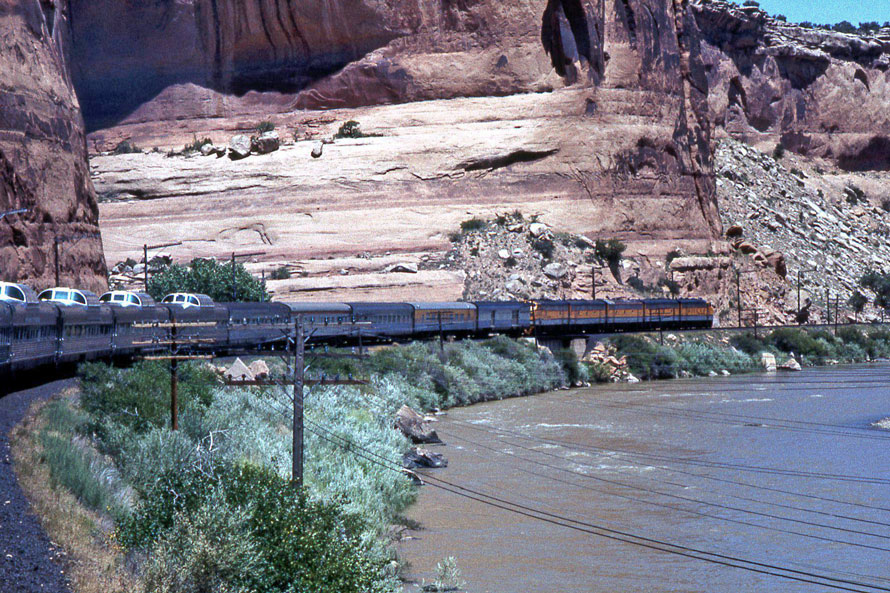
My 1969 railroad adventure continues . . .
San Francisco has always had a special place in my heart. I lived there for three months in 1953, was the only non-Oriental in my third grade class, and as a curious eight-year-old soaked up the images of cable cars, street cars, Twin Peaks tunnel, and Golden Gate Park.
In 1953, with a family of four and luggage for three months away, the best way to travel was by train. From Grand Central Terminal, take the New York Central’s Lake Shore Limited to Chicago, connect with the California Zephyr to California, and see ground level America from sea to shining sea. For my eight-year-old curiosity, it was an exposure to travel and the USA that made a permanent impression on me.
The post war renaissance of long distance train travel was in full swing, and arguably the most aggressive effort to capture the travel market was the California Zephyr.
The Zephyr ran daily between Chicago and Western Pacific’s terminal in Oakland, California, and was operated by three cooperating railroads. The Chicago, Burlington & Quincy (CB&Q) between Chicago and Denver, the Denver & Rio Grande Western (D&RGW) to Salt Lake City, and finally the Western Pacific (WP) for the final stretch through the Feather River Canyon down to the sea in Oakland.
The train was fitted with the finest equipment and technology available, with air conditioning, radio, a high level of comfort and convenience, excellent meals in the diner, and some of the most spectacular scenery in America.
This was the essence of the American Streamliner, with only the colorful F units of the three railroads adding contrast with the sleek silver sides of the train.
Sixteen years later, passenger traffic had been mostly drained away by jet passenger planes and the new Interstate Highway System, and the California Zephyr was reaching the end of the line with rising costs and declining revenue. If I was to relive my boyhood adventure, there was no time to waste.
I met my Colby College friend, Geoff Quadland, who was taking thirty days R&R from Vietnam, in San Francisco. We had planned the trip for mid-July to enjoy the maximum number of daylight hours for sightseeing and railroad photography.
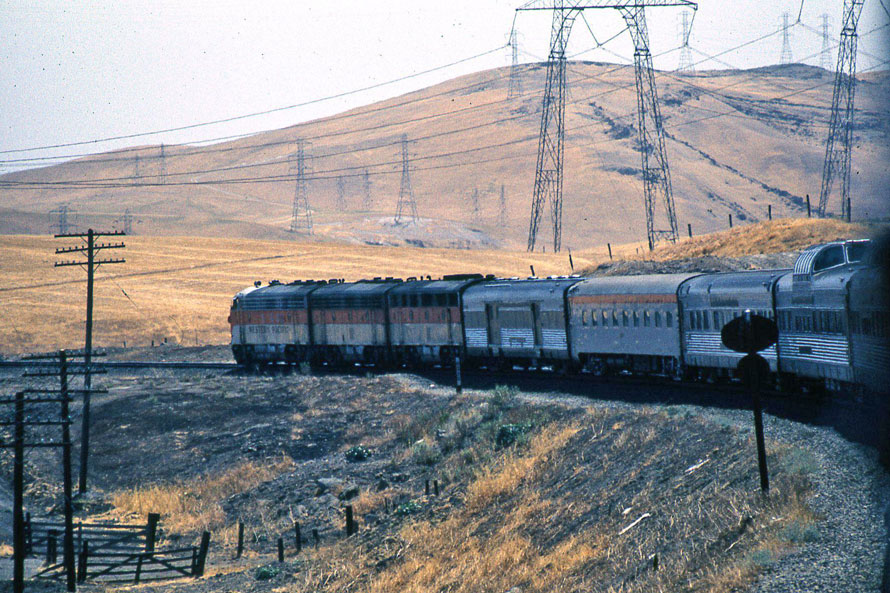
We planned to spend much of the time hanging out the dutch doors to catch the sights, sounds, and smells of the train.
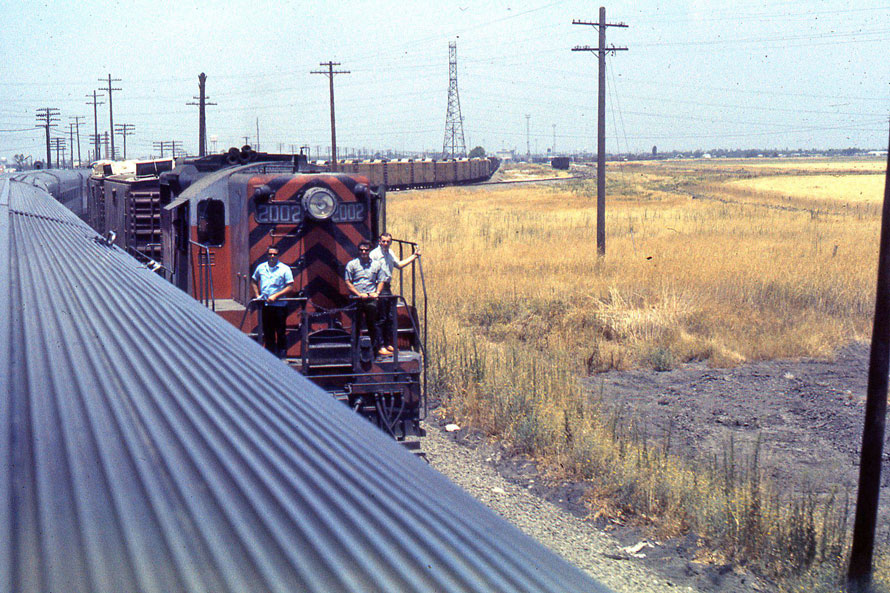
Geoff and I were well versed on railroad operations, and carefully studied the timetable to figure out where we were scheduled to meet the three westbound California Zephyrs. If the CTC signals checked out, we would head for our car’s dutch doors, cameras locked and loaded with a fresh roll of Kodachrome 64.
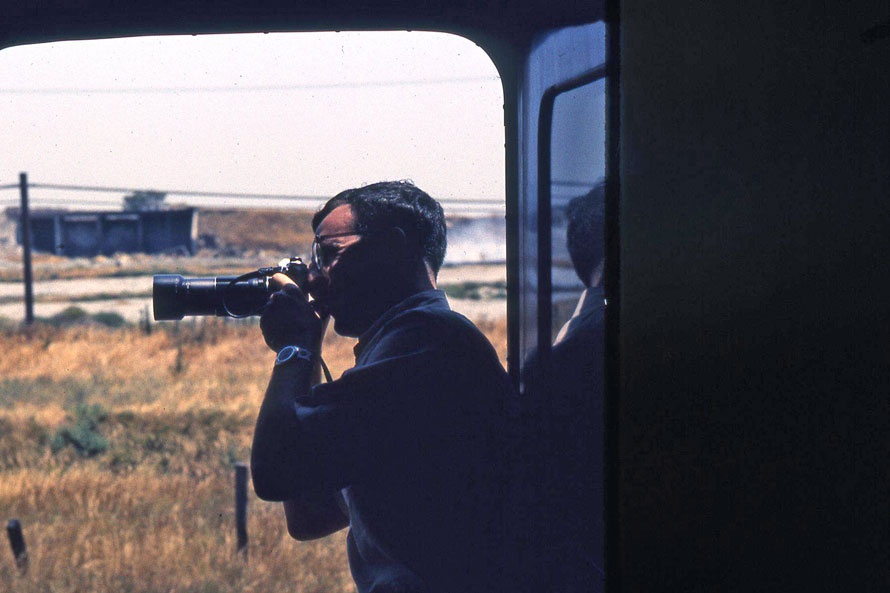
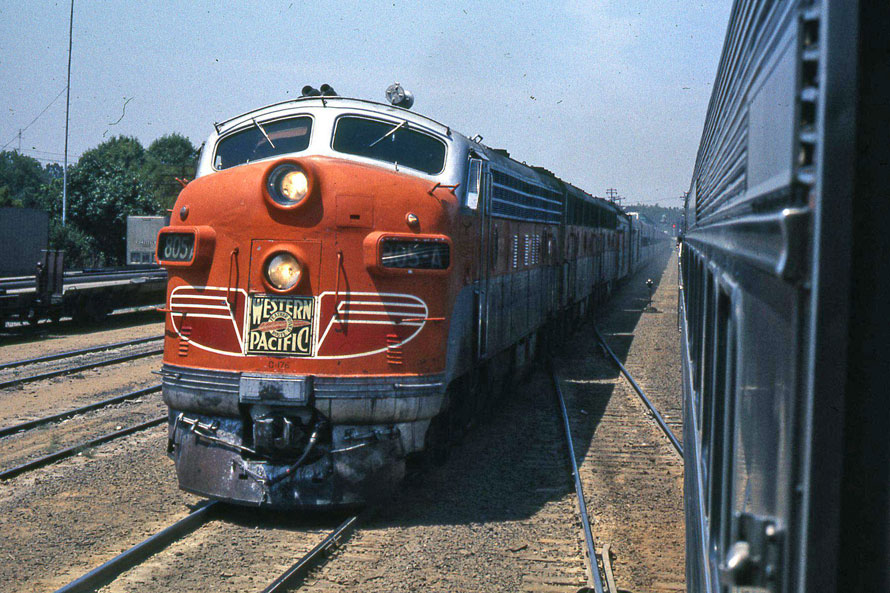
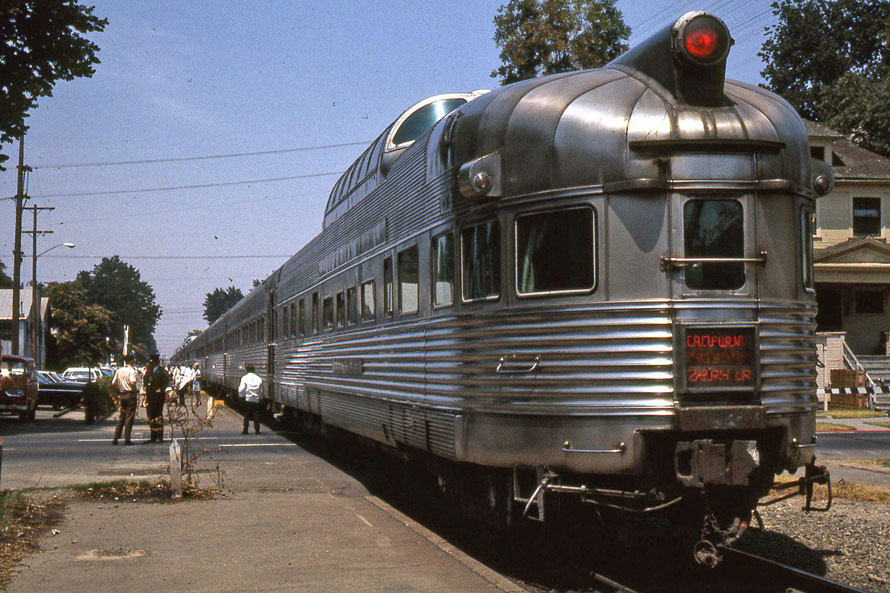
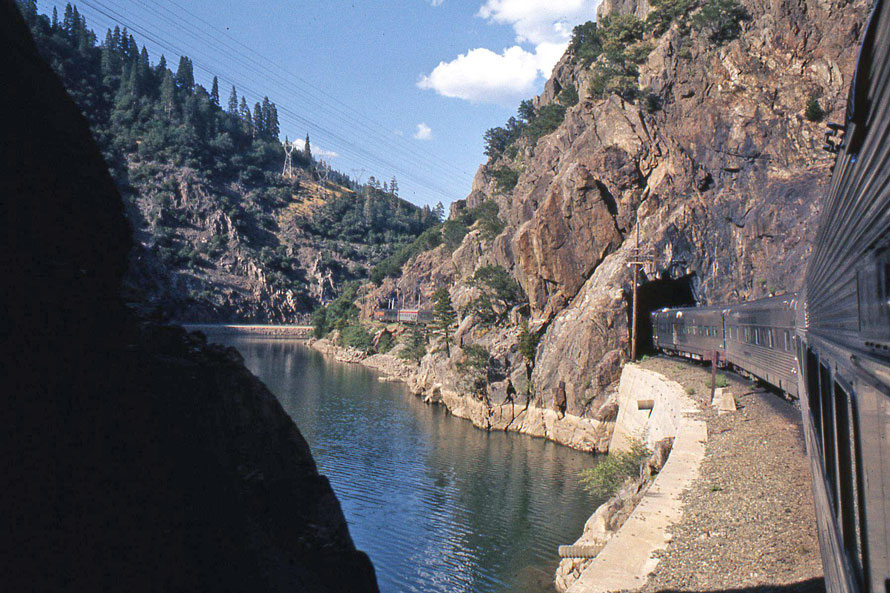
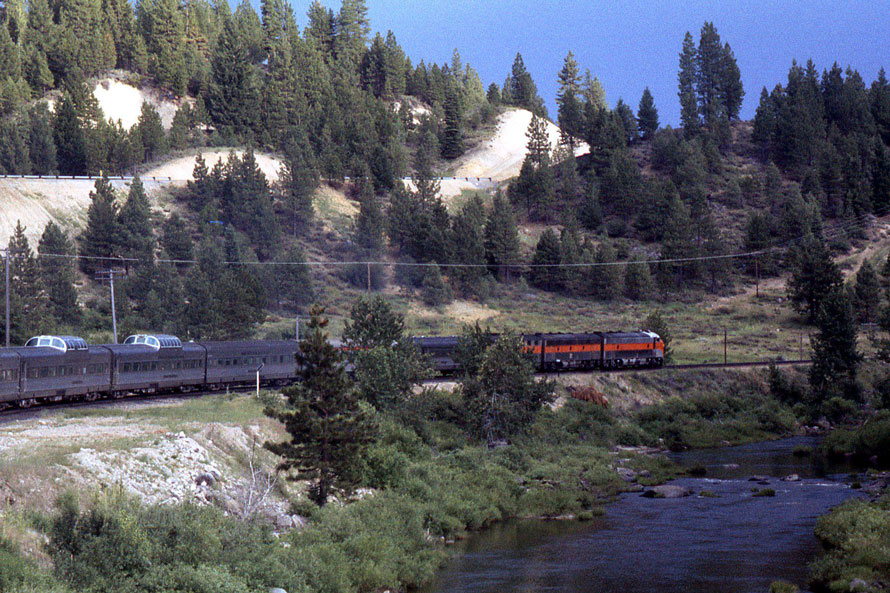
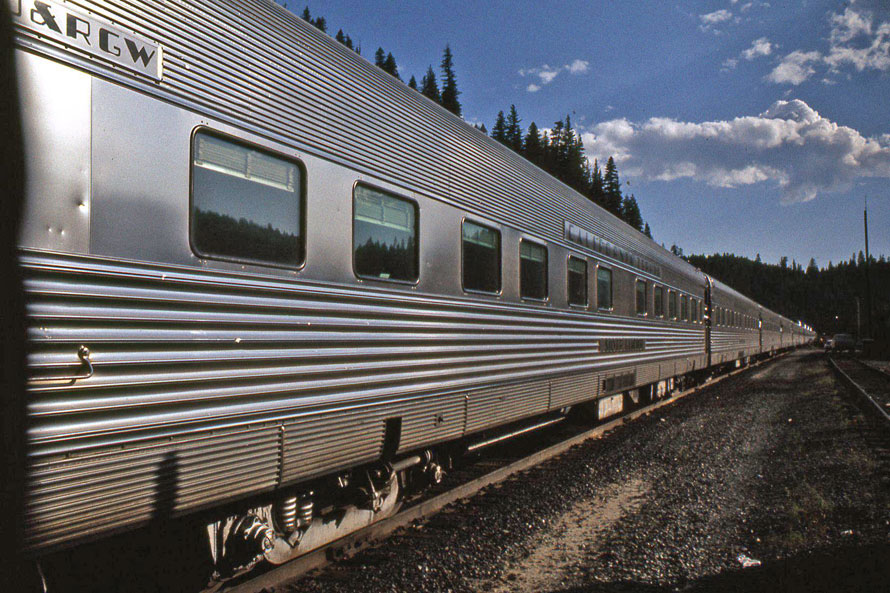
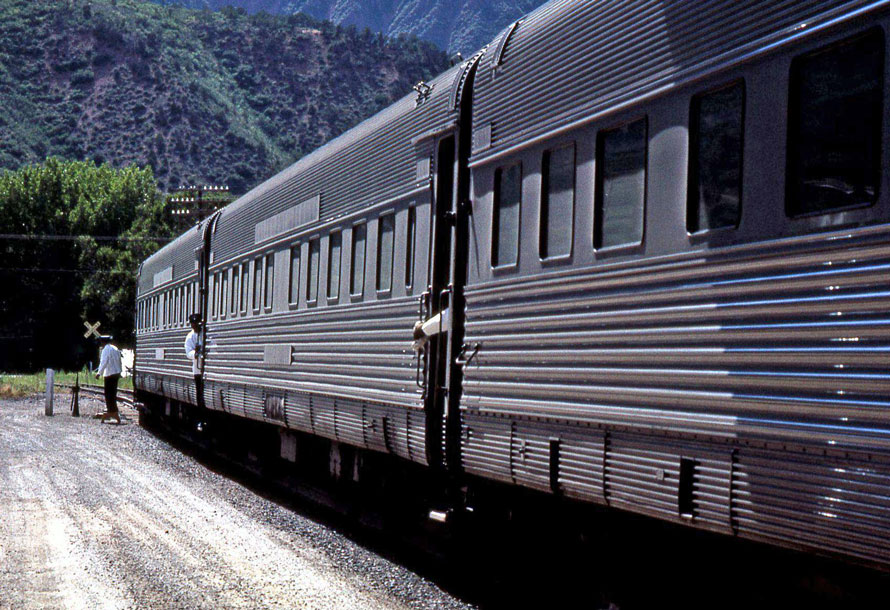
Attendants in every car were always available to satisfy any traveler’s request. After a few hours of dutch door photography, it was time for a “cold one” in the observation car. Coors was the beer of choice on the California Zephyr, and by Grand Junction we had put enough of a dent in the cold beer inventory on board that the crew sent a message ahead for a resupply of additional cases of Coors.
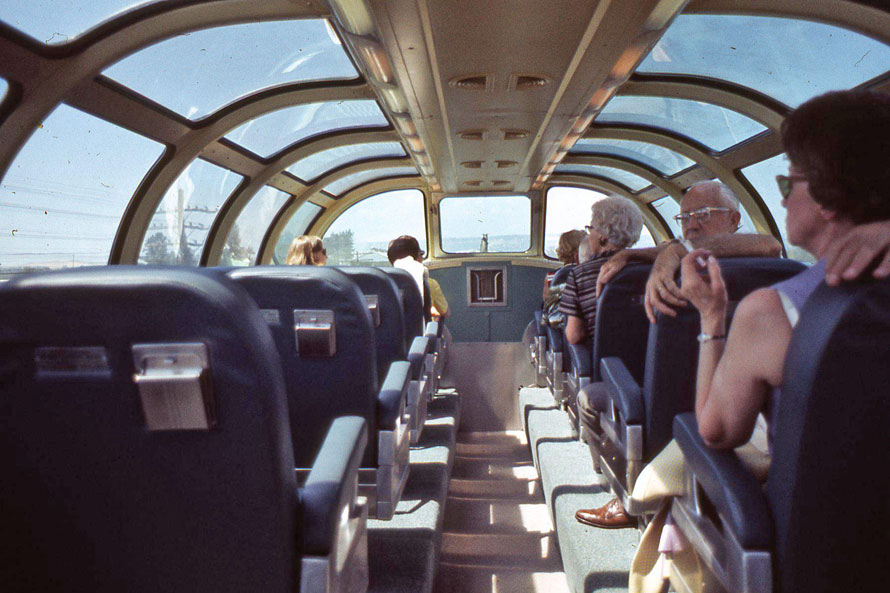
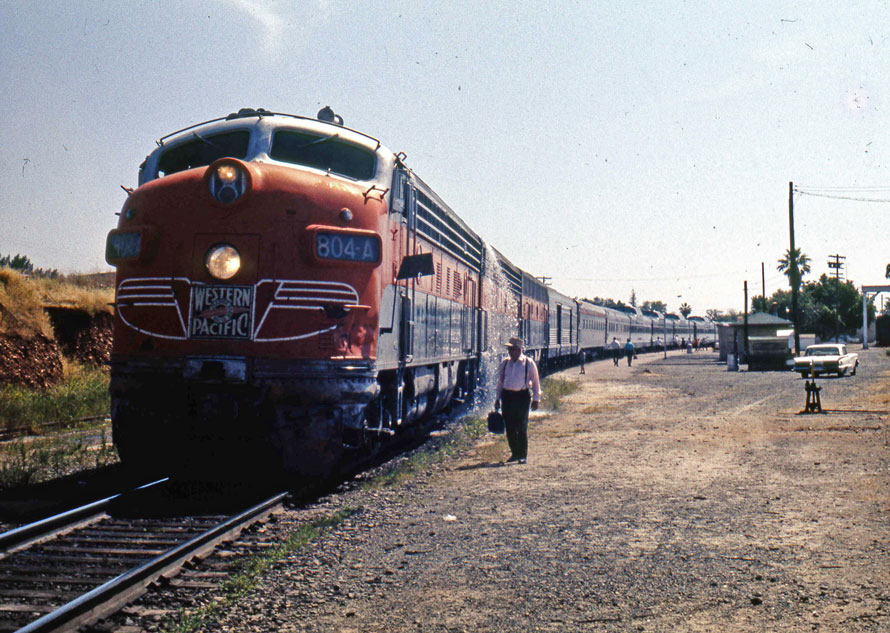
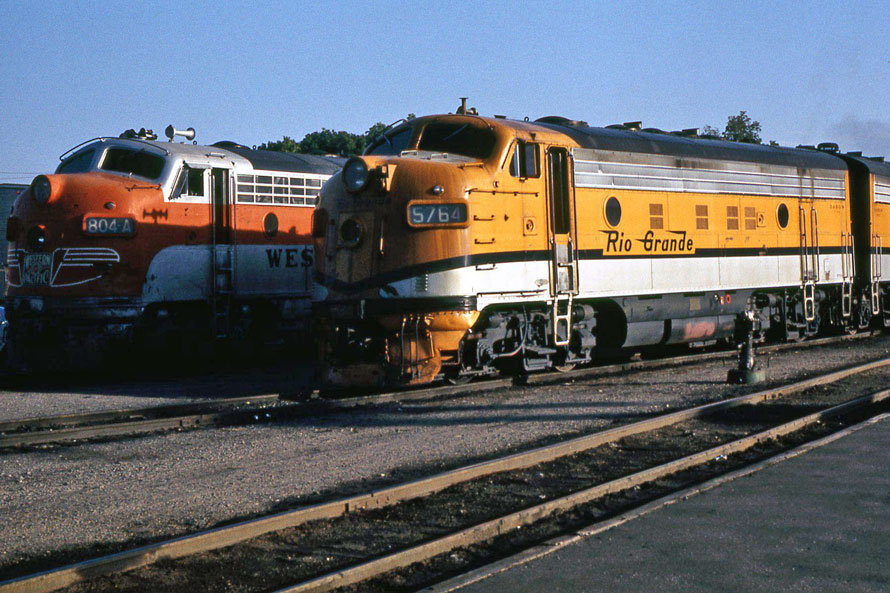
The aptly named Western Pacific delivered our train on time to Salt Lake City, where the next section of our California Zephyr trip was taken over by the Denver & Rio Grande Western. Started in 1870 as a three foot gauge mountain railroad, the D&RGW was the highest mainline railroad in the nation. Their motto was “Through the Rockies, not around them.” This made their line a spectacular scenic adventure, the highlight of the trip being the 6.2 mile long Moffat Tunnel, opened in 1928.
The D&RGW played an important role in the silver mining industry, and even today narrow gauge sections of the original lines are operated by the Cumbres & Toltec Scenic Railroad and the Durango and Silverton Narrow Gauge Railroad.

Rebel of the Rockies, written and performed by singer songwriter Denis Hurst, about the D&RGW – Copyright 2019
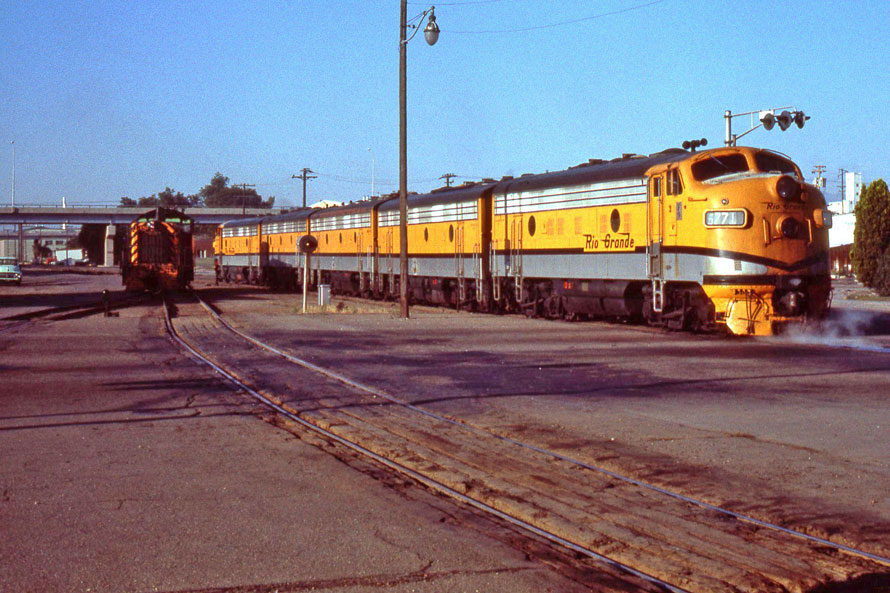
The only thing more beautiful than the train was the scenery.

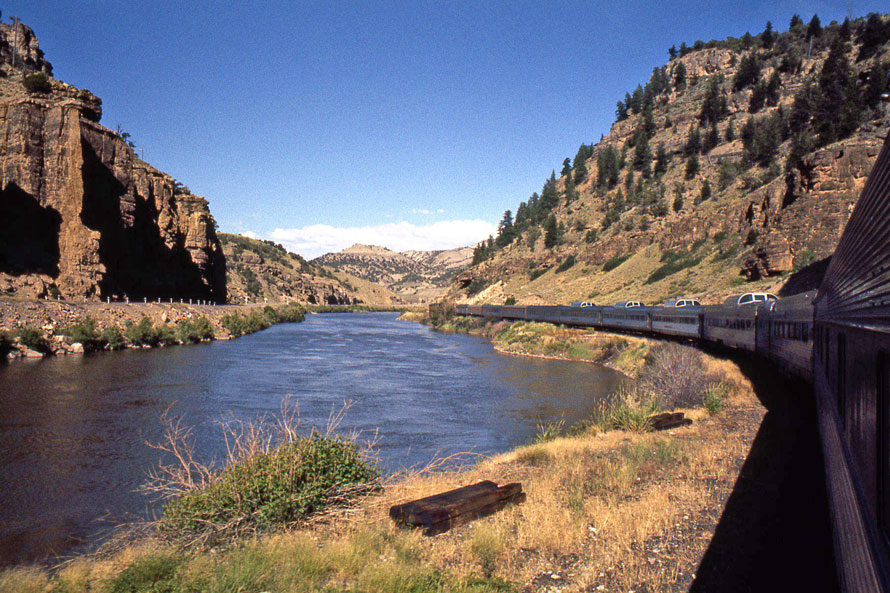
Many times the work and sacrifices of the original railroad builders came to mind.
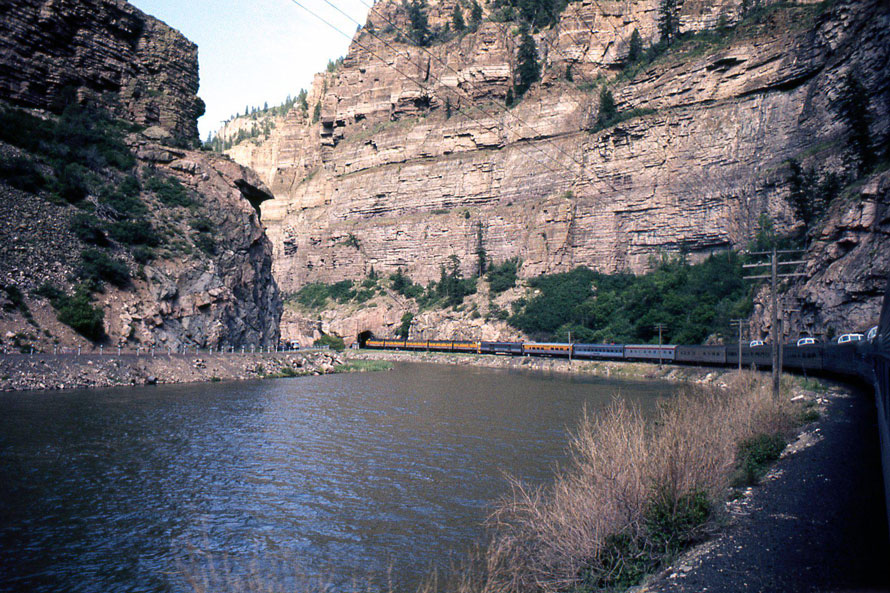
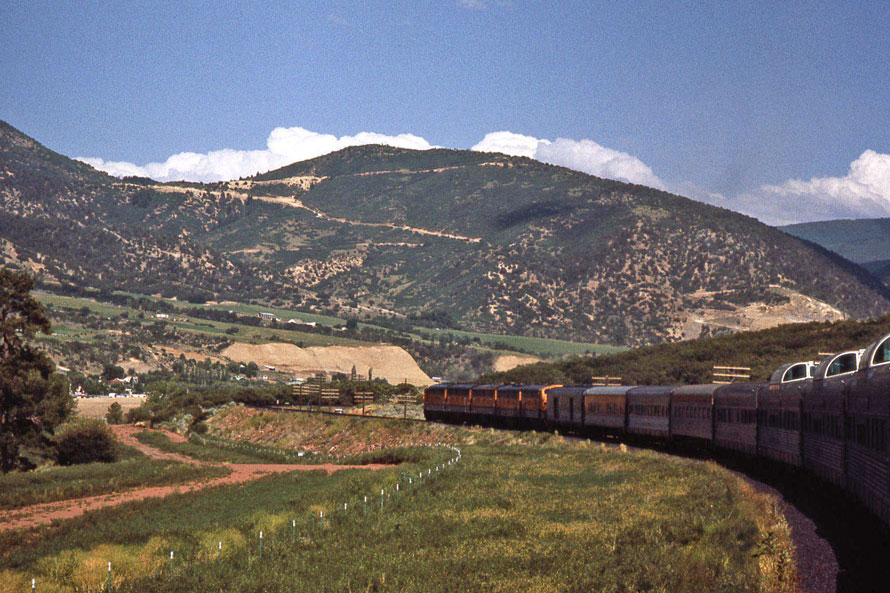
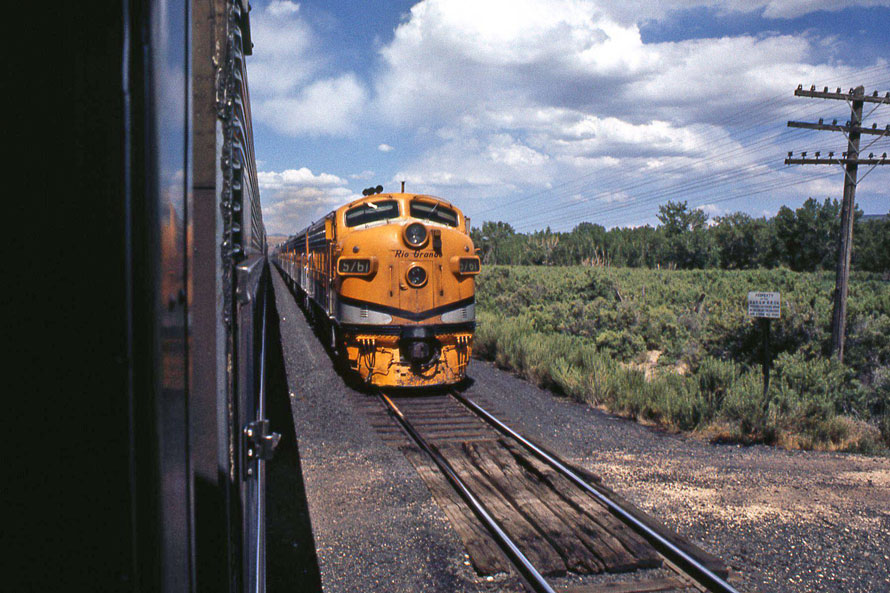
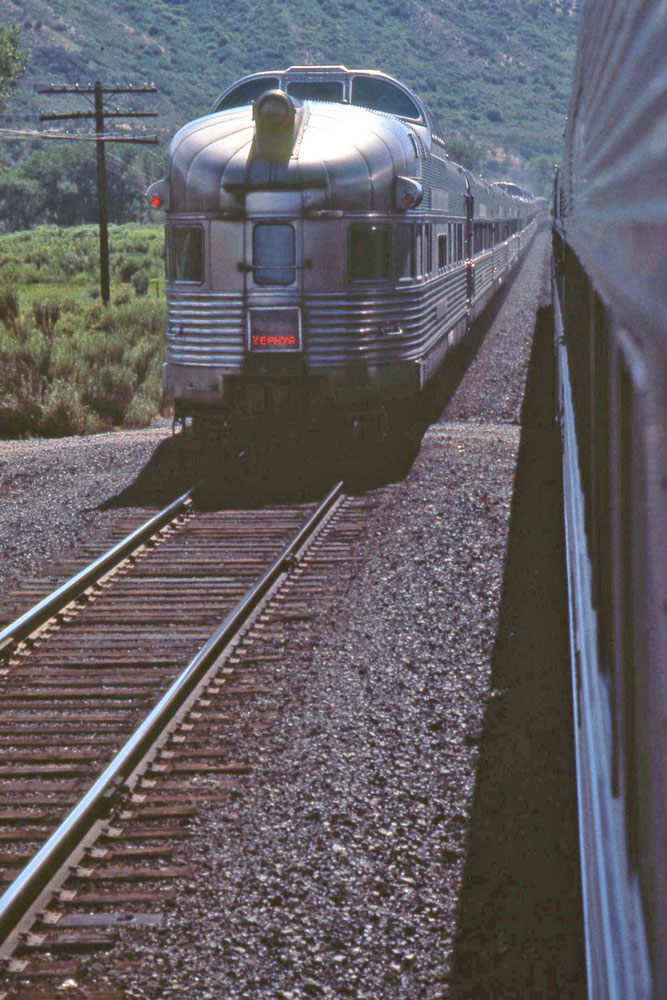
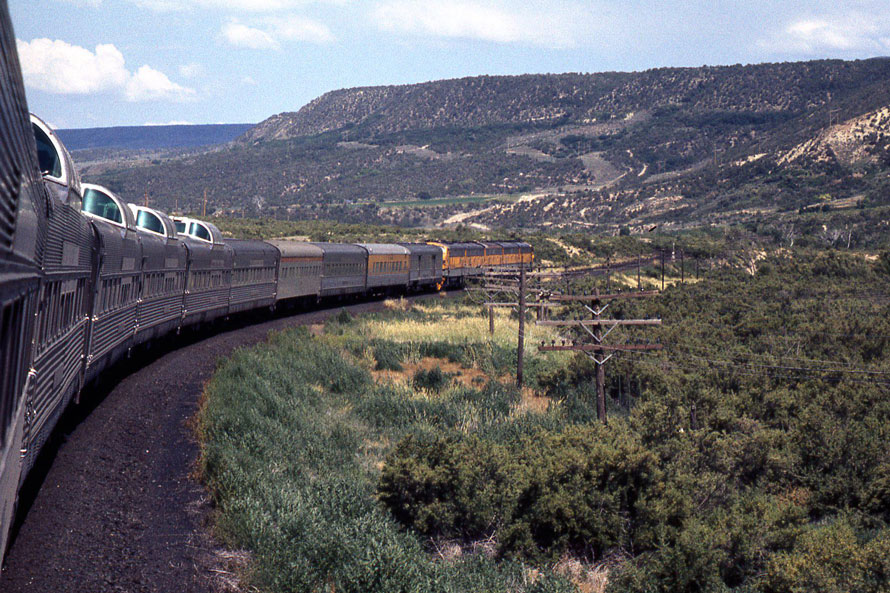
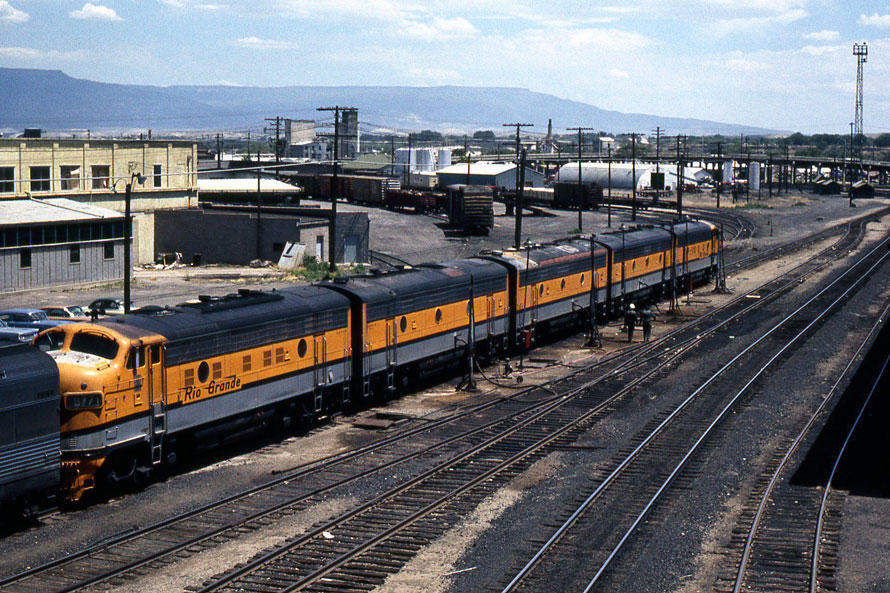
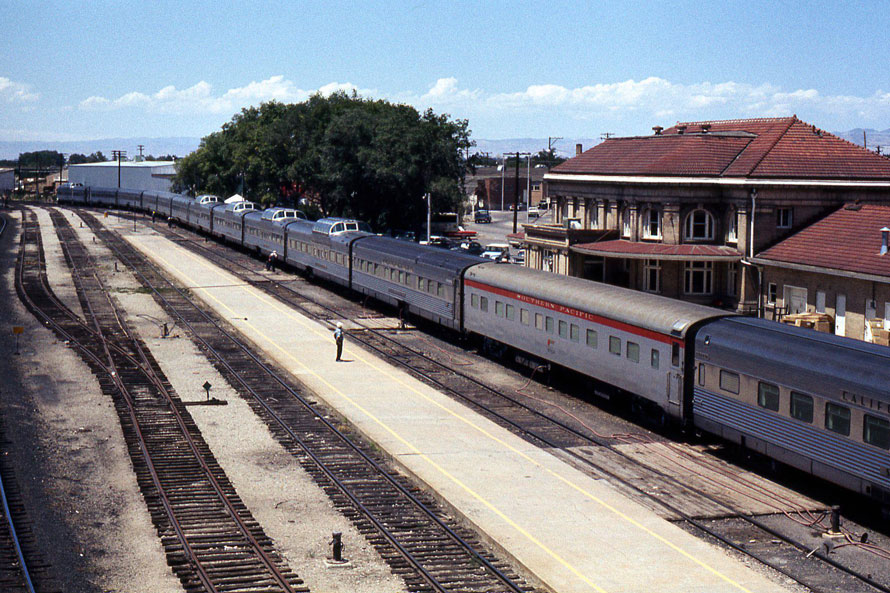
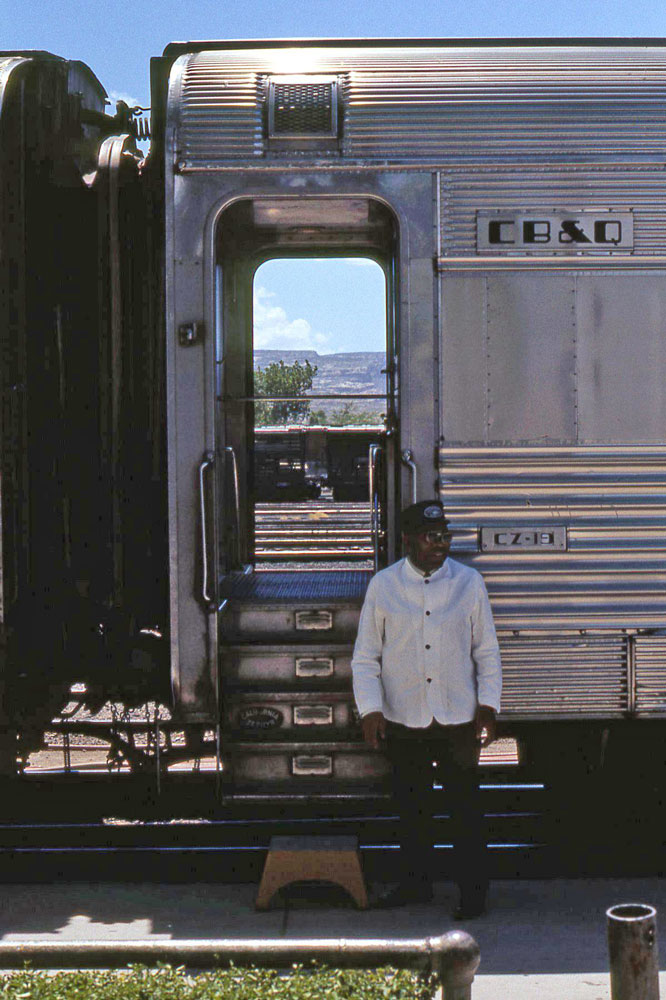
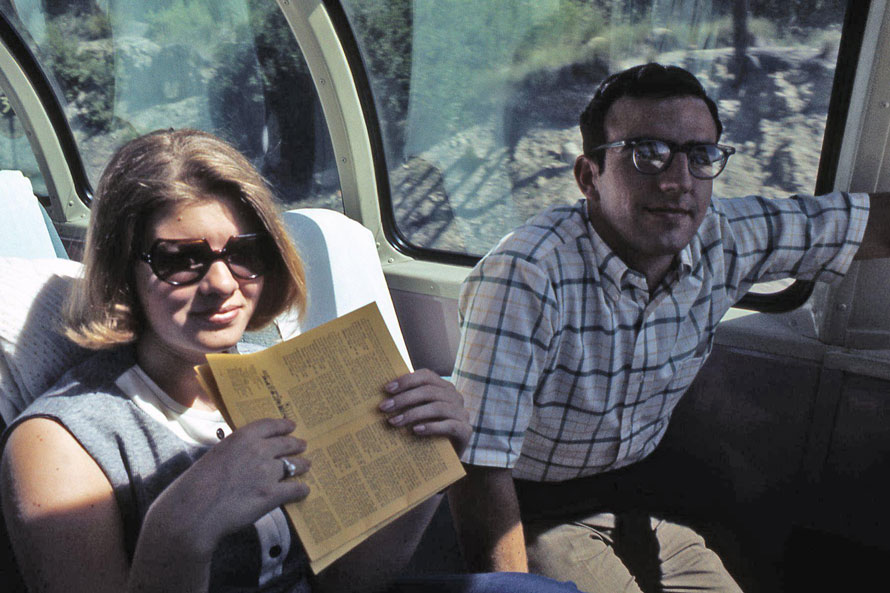
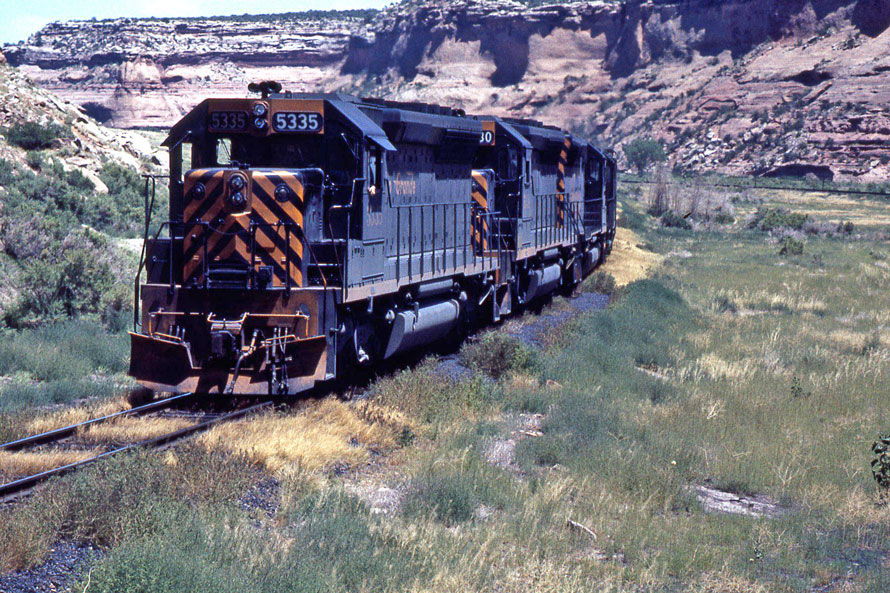
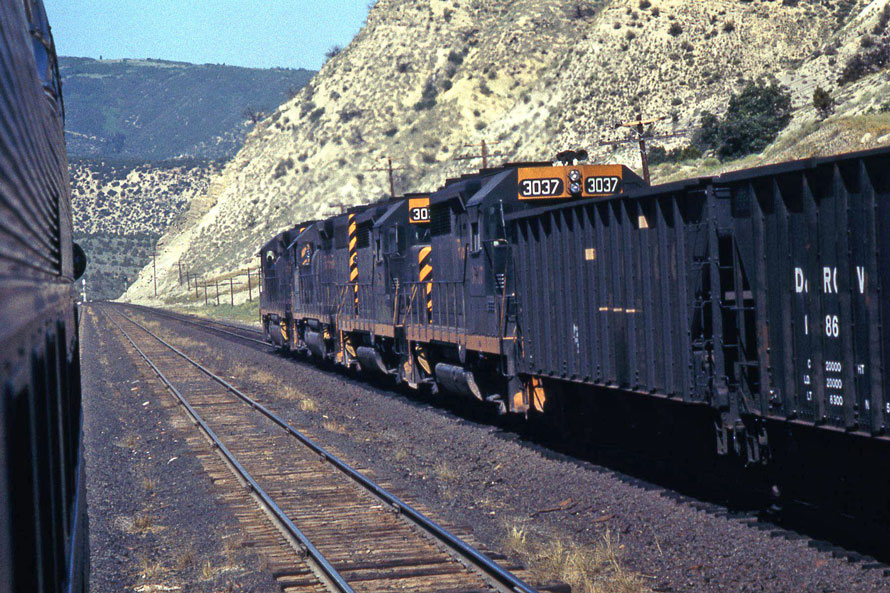

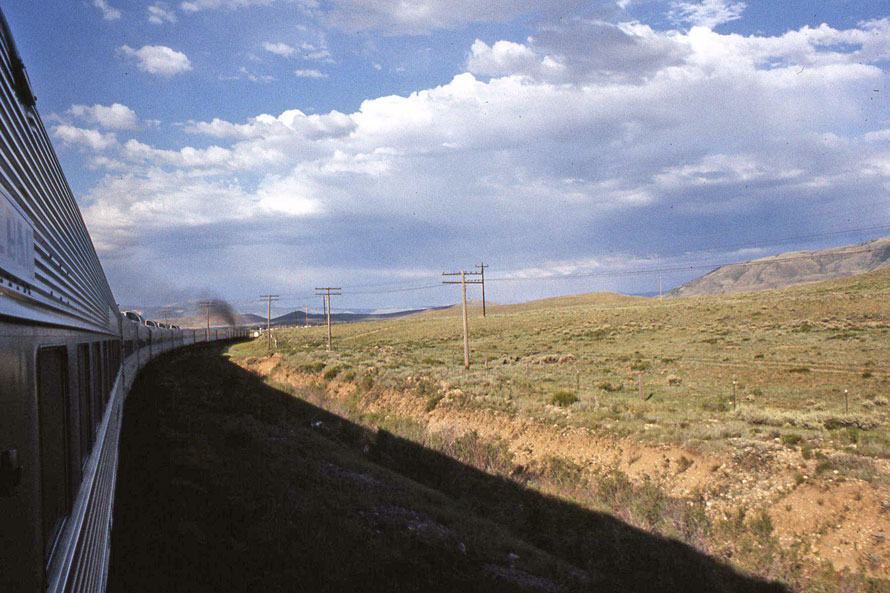
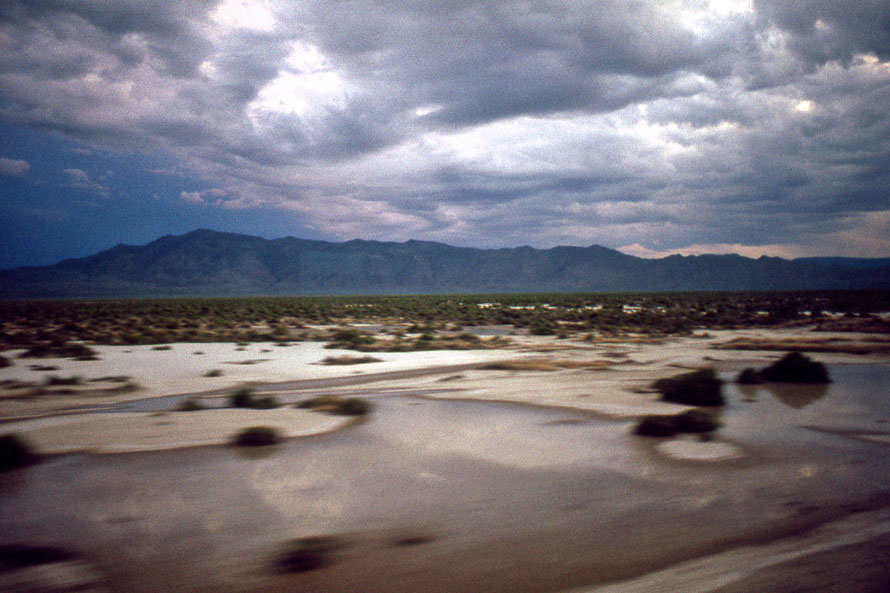
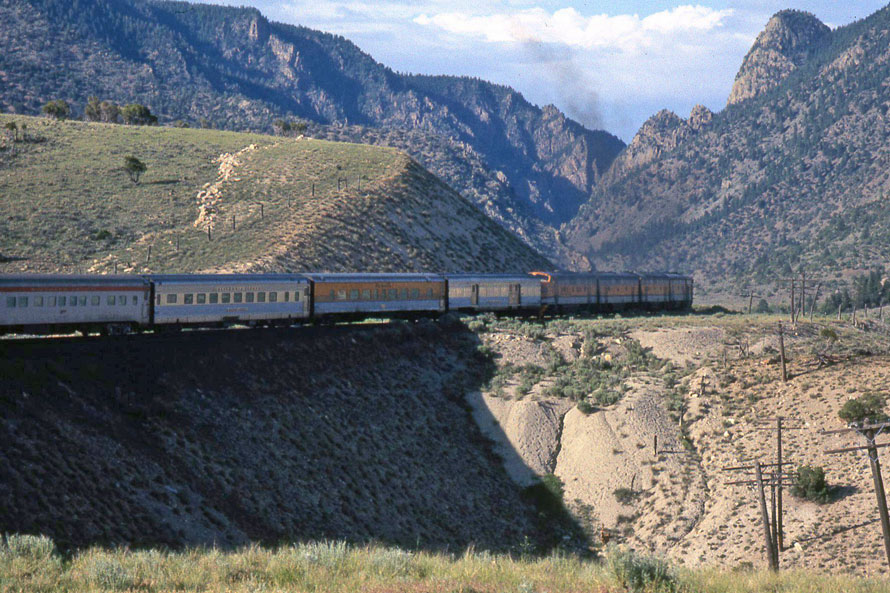
After our trip through the Rocky Mountains, we descended into Denver at dusk, where the final leg of our adventure would be taken over by the CB&Q to deliver the California Zephyr to Chicago.
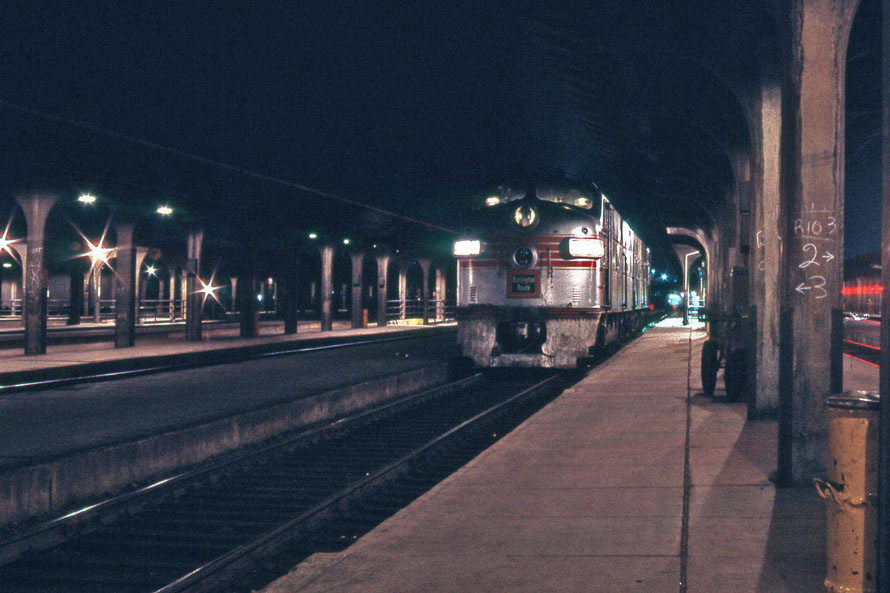
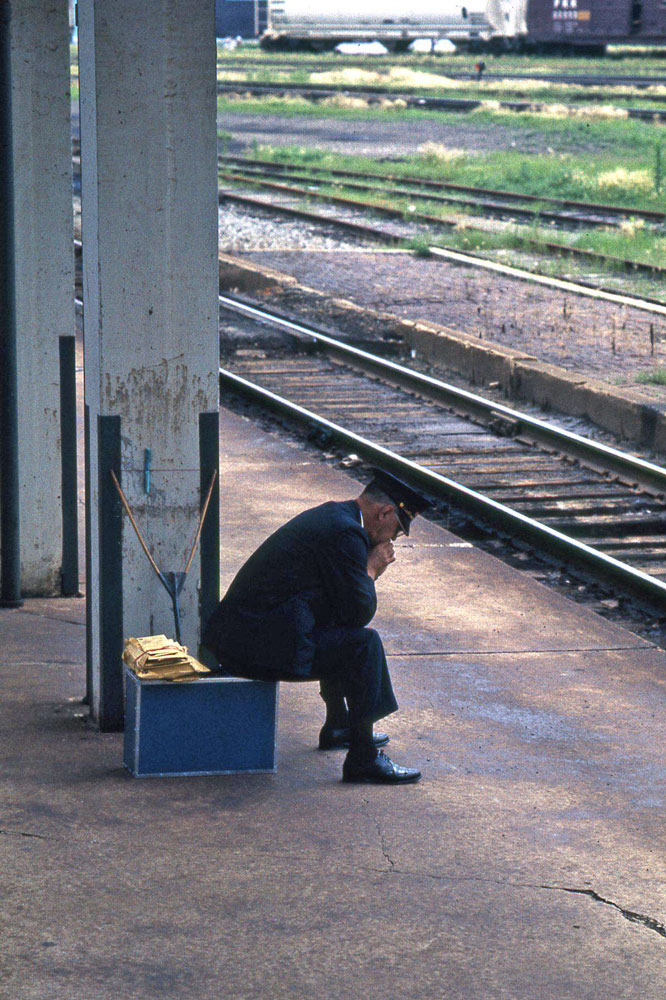
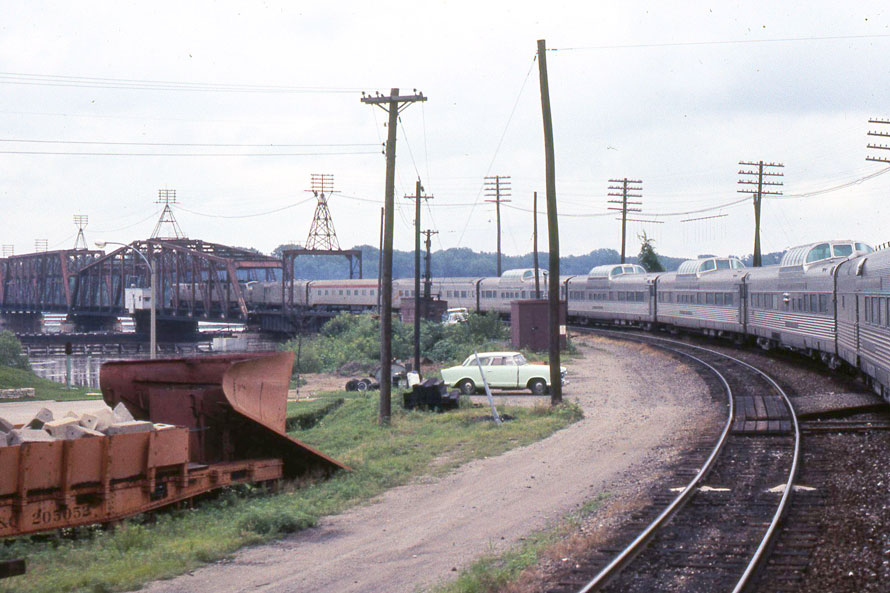
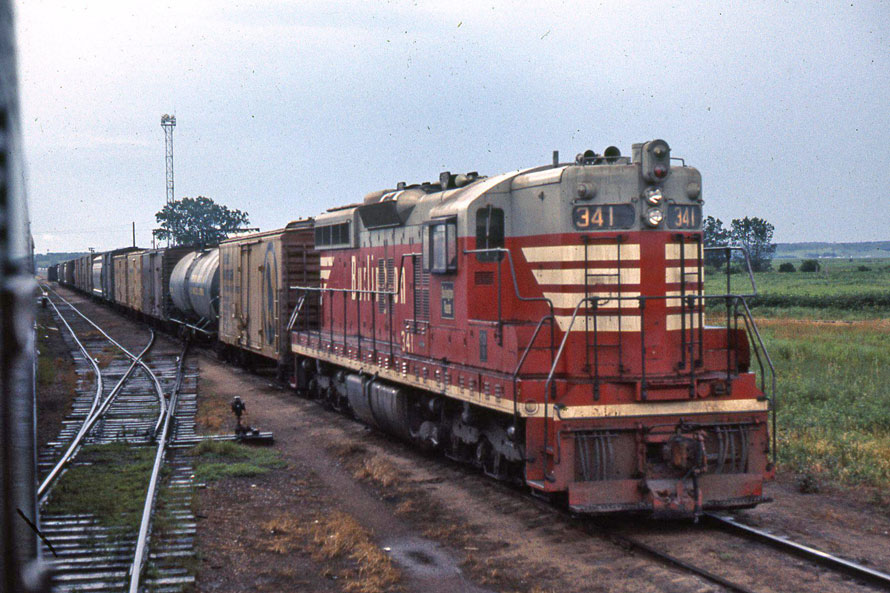
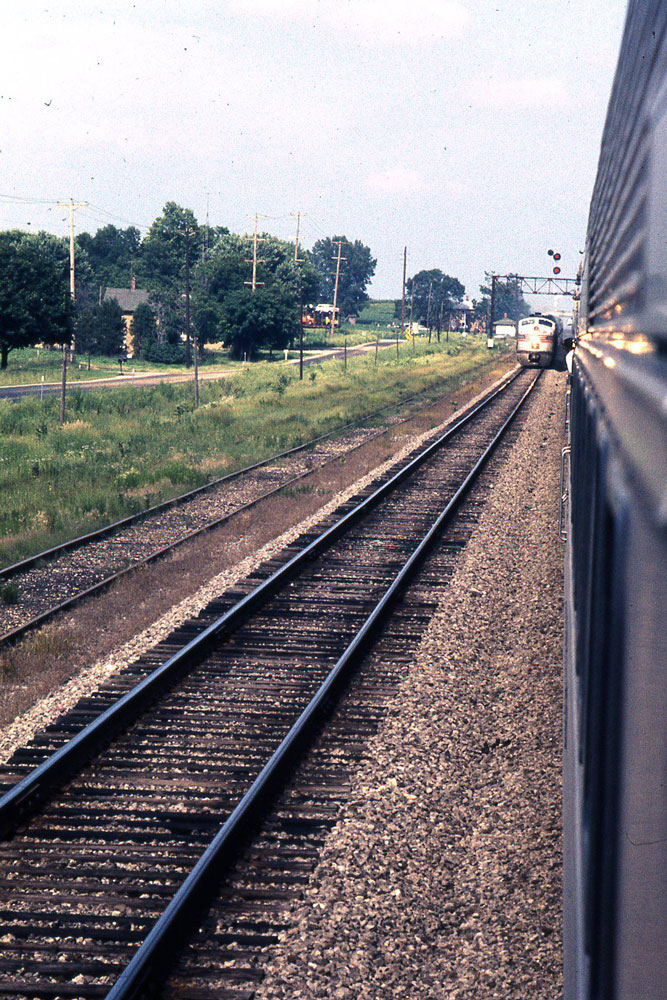
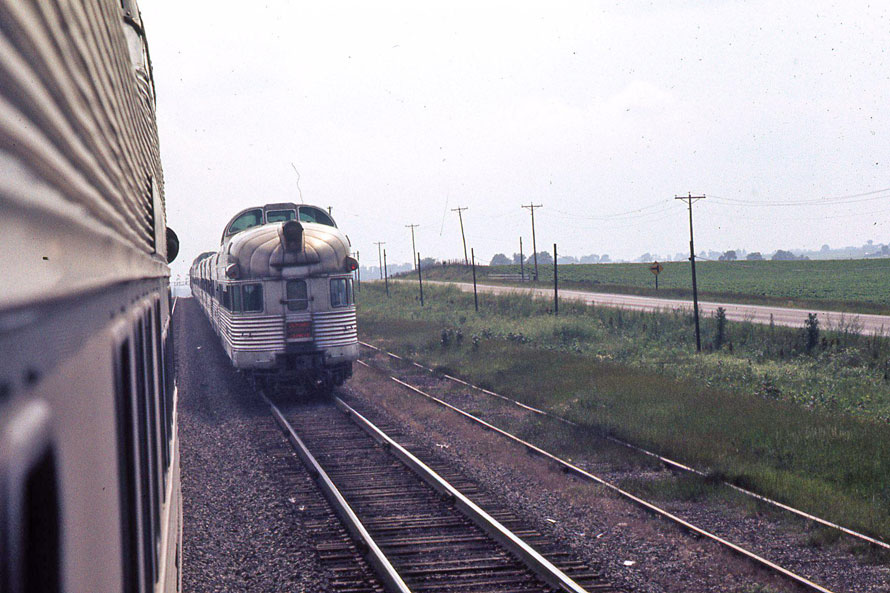
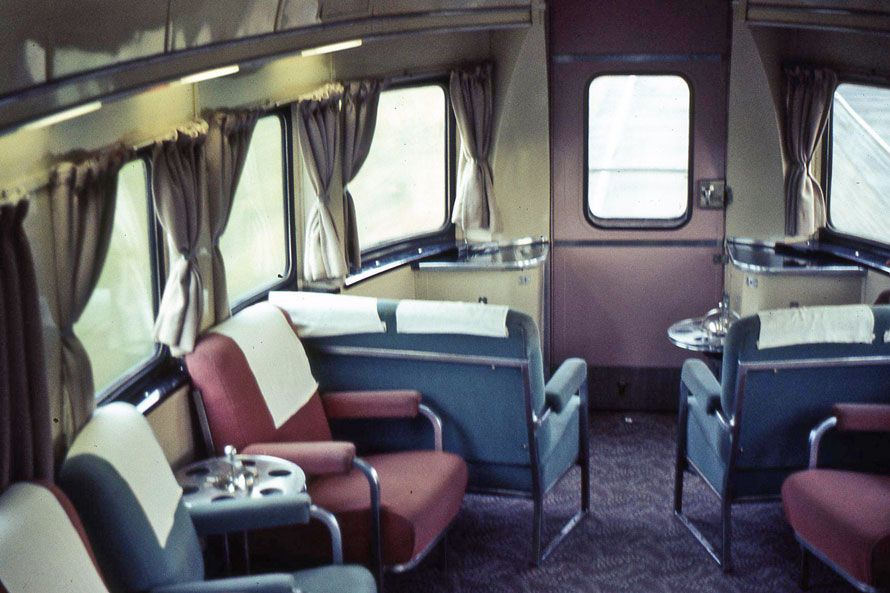
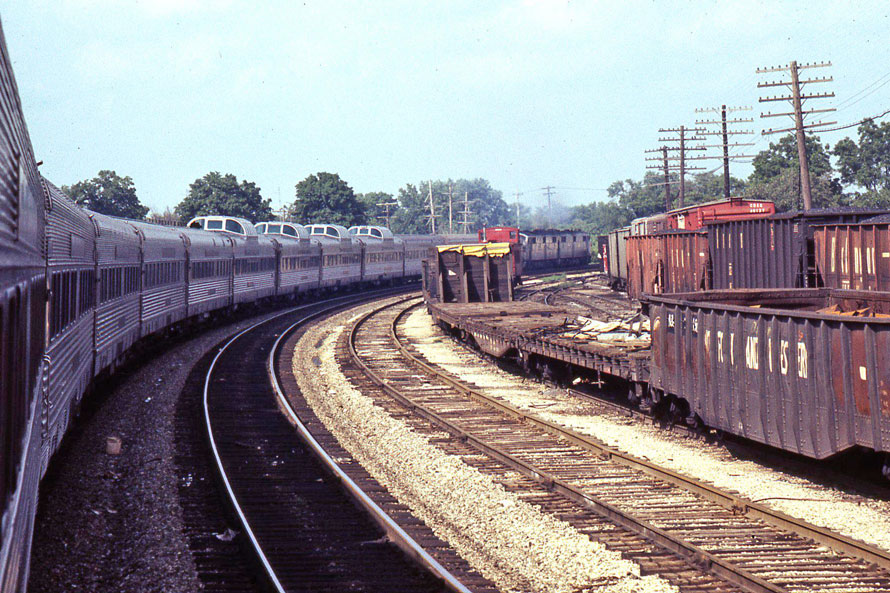

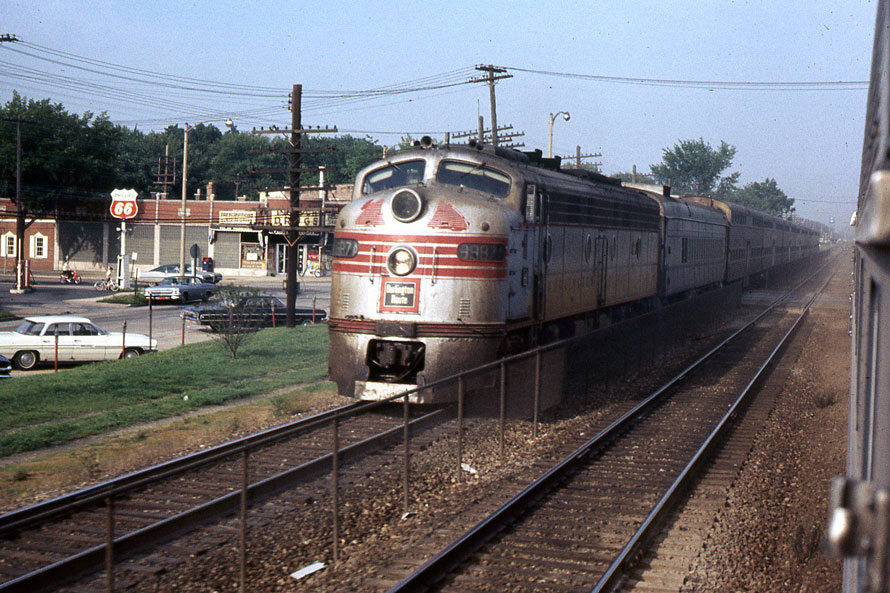
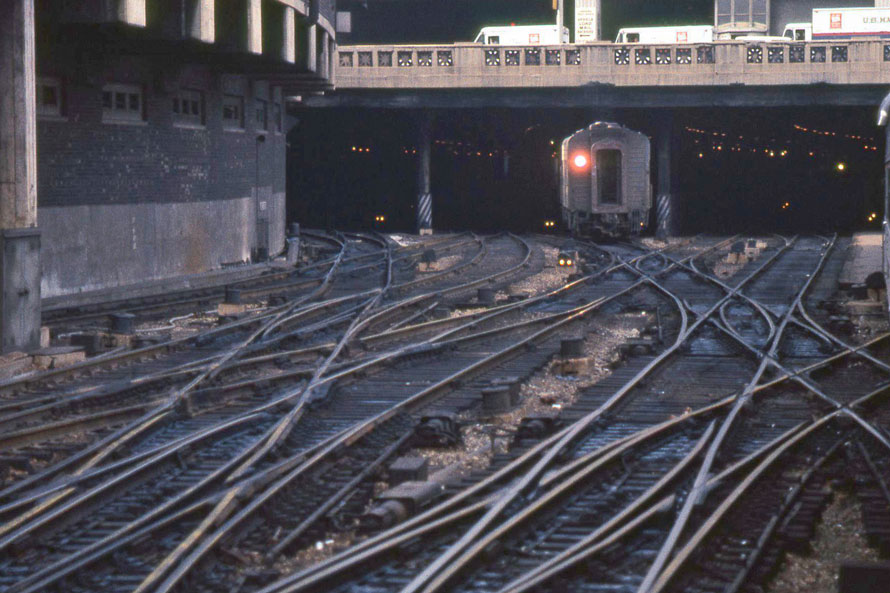
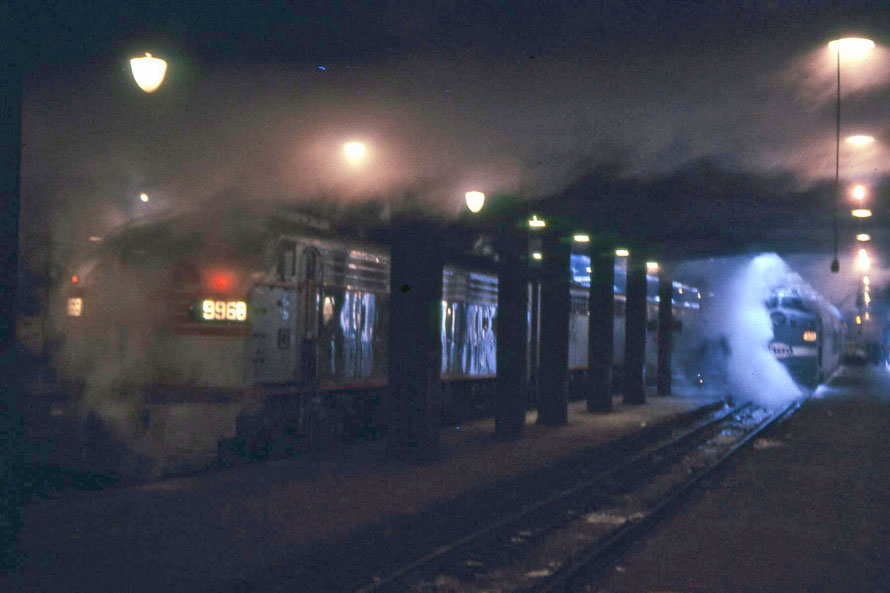
In Chicago, we took a Penn Central coach train back to NY. The engine crew invited us aboard for the ride to Fort Wayne.
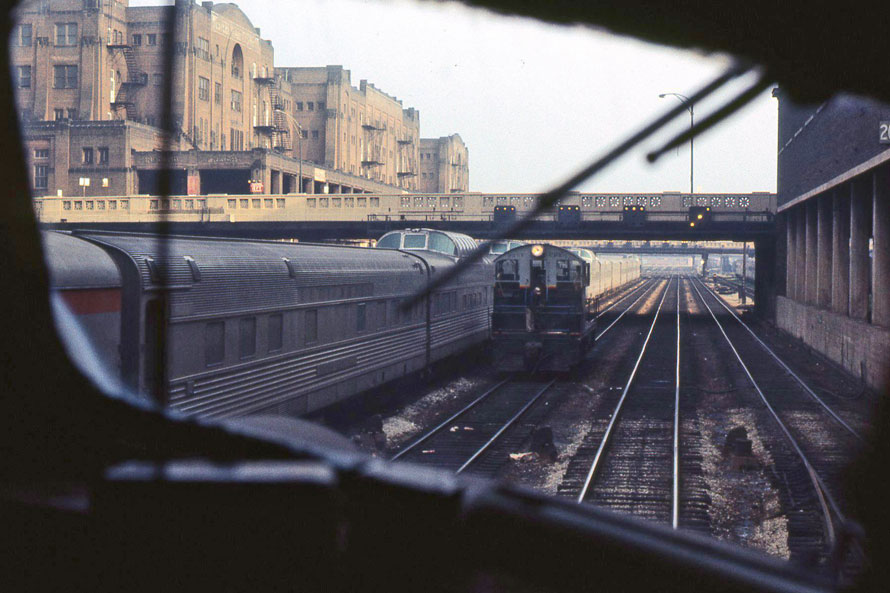
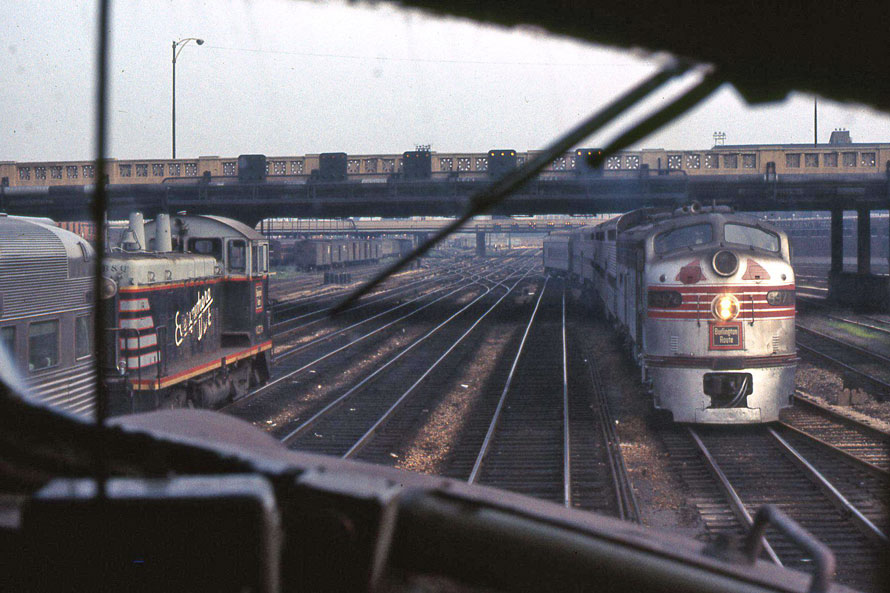

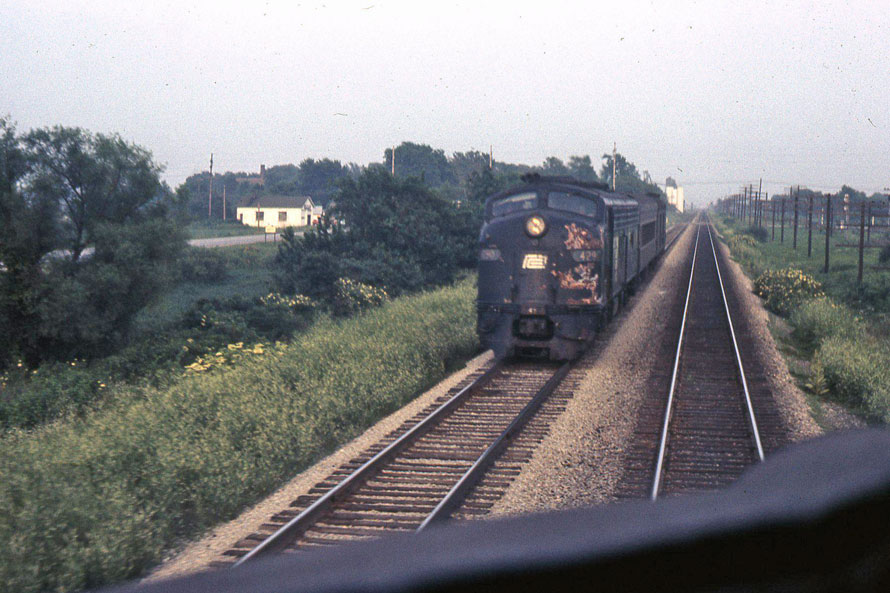
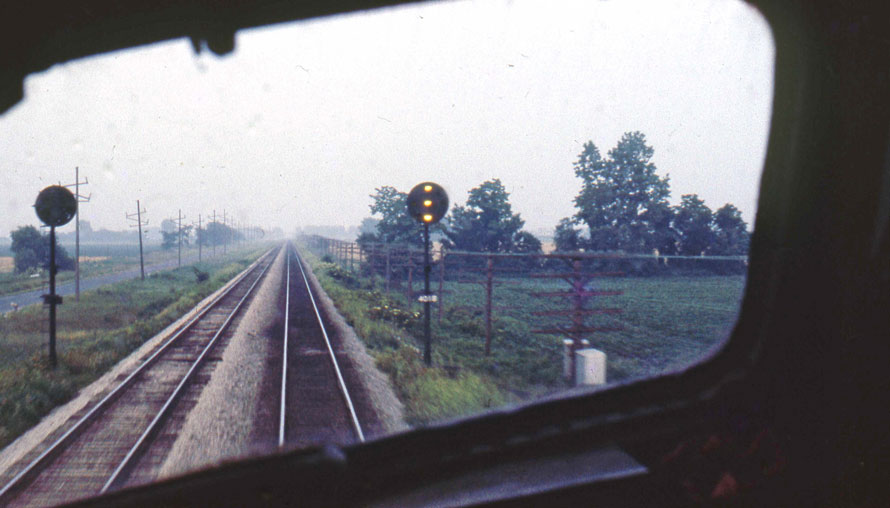
So the goal of riding the California Zephyr was reached. The train was operated by the proud crews right up to the end, but nothing could compete with jet planes for transcontinental travel. Not long after, the application for discontinuance of this iconic train was approved, and the best streamliner in the country disappeared into railroad lore.
The last trip of the original California Zephyr was on March 24, 1970
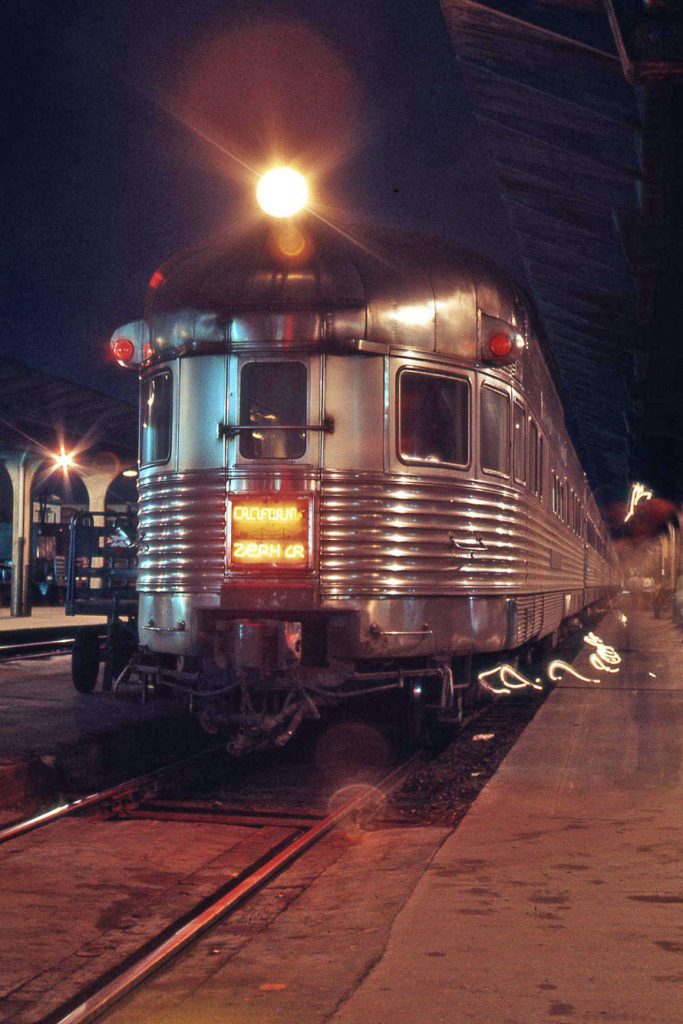
The next day I booked on and returned to my Operator’s job in Stamford, Connecticut, with my memories and slides to remind me of my 1969 adventure, when there was No Time to Waste.
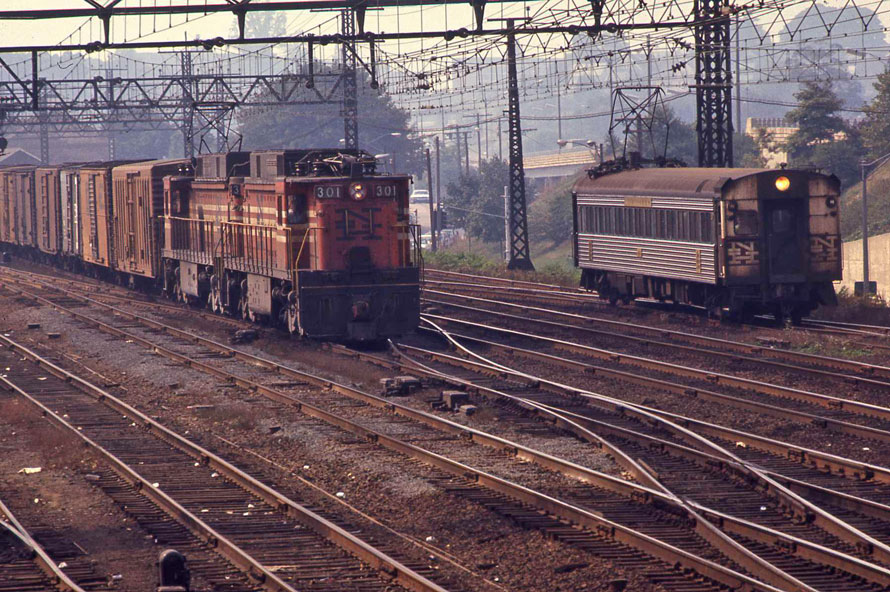
Bob Hughes – Text and photographs Copyright 2019
This is the conclusion of a three-part article. Part One is here, and Part Two is here.
Thanks so much!! Wonderful text and photos!! Thanks again! Enjoyable!
Thank you Bob for sharing your amazing collection of California Zephyr historic photographs and accompanying written words! Born too late, I can only image this type of train travel on a daily basis. One of the perks of being the official event photographer for Nickel Plate 765’s Joliet Rocket last year was having a roomette in the Zephyr’s Silver Rapids sleeper car for the weekend. During the deadhead moves, I can honestly say that in the year 2018 I rode behind a Berkshire without diesel assist at 70+mph inbound towards Chicago’s LaSalle Street Station in both the Silver Lariat and Silver Solarium domed observation cars. Needless to say, the thoughts of how it all used to be reverberated within me all weekend; and to this day still does. No time to waste – certainly not!
We were blessed to use the Silver Solarium for a week back in 2012. Tagged onto Coast Starlight; Empire Builder; California Zepher. Had our own chef and steward. Just our family, 10 of us. A trip for a lifetime of memories with kids and grandkids.
Beautiful photos Bob. That must’ve taking some doing to get those meet shots so perfect.
Kevin, it was all in the timing and carefully watching the CTC signals head for indications of a meet in the mostly single track railroad. That, and luck.